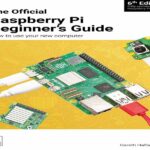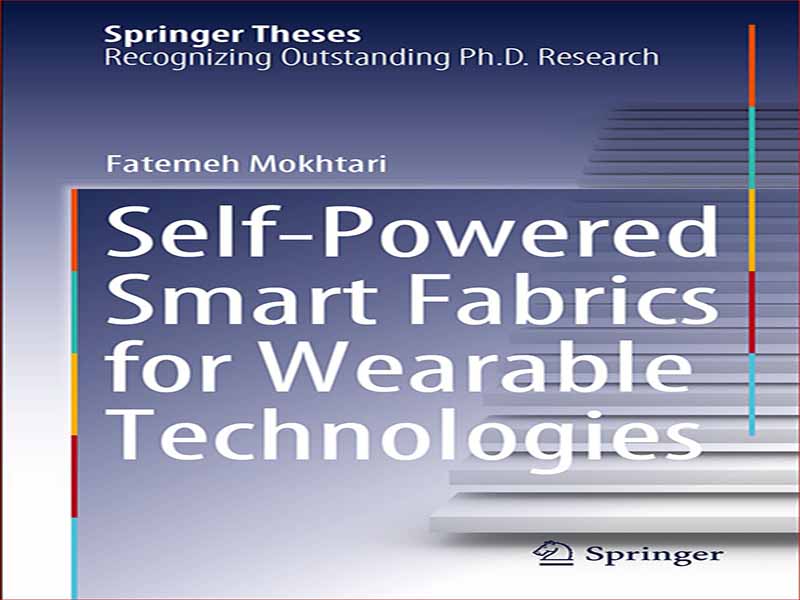- عنوان کتاب: Self-Powered Smart Fabrics for Wearable Technologies
- نویسنده: Fatemeh Mokhtari
- حوزه: مهندسی نساجی
- سال انتشار: 2022
- تعداد صفحه: 178
- زبان اصلی: انگلیسی
- نوع فایل: pdf
- حجم فایل: 8.17 مگابایت
پیشرفتهای اخیر در دستگاههای الکترونیکی کوچک با قابلیتهای محاسباتی بالاتر و فنآوریهای ارتباطی فوقالعاده کممصرف شامل تمایل به تغذیه این دستگاهها با راندمان انرژی بالا، عمر چرخه طولانی، ساخت سریع و ارزان و منابع انرژی کم وزن است. برداشتکنندههای انرژی مکانیکی برای کاربردهای متنوعی مانند حسگرهای بیسیم خودکار، سیستمهای نظارت ساختاری و سلامت انسان و برداشت ارزان انرژی از حرکات انسان مورد نیاز هستند. ادغام مواد پیزوالکتریک و استراتژیهای ساخت جدید با فرآیند نساجی معمولی، ظهور زمینه فناوری پوشیدنی را ایجاد کرد که میتواند این نیازها را برآورده کند. به طور خاص، دستگاه های الکترونیکی مبتنی بر فیبر را می توان در لباس هایی با ویژگی های مطلوب مانند انعطاف پذیری، کشش پذیری، نفوذپذیری و سبک وزن ادغام کرد. الیاف پیزوالکتریک یک گزینه پلت فرم رابط ایده آل بین محیط، دستگاه های الکترونیکی و بدن انسان است و پلی وینیلیدین فلوراید (PVDF) به دلیل مقاومت شیمیایی خوب، استحکام، مقاومت حرارتی و پایدار و بزرگ پیزوالکتریک، فروالکتریک، در زمینه فناوری پوشیدنی برجسته شده است. و خواص پیروالکتریک کار قبلی نشان داده است که الیاف PVDF را می توان در برداشت کننده های انرژی مکانیکی مبتنی بر نساجی ادغام کرد و پتانسیل بهبود بیشتر را برجسته کرد. چالشهای کنونی شامل پردازش آهسته، راندمان تبدیل کم انرژی و مشکل در ادغام الیاف (و الکترودهای متصل به هم مرتبط) به لباسهای نساجی است. بنابراین، هدف از این پروژه ساخت و شناسایی الیاف پیزوالکتریک مناسب برای ادغام آماده در مواد نساجی است. این کتاب روشهای تشکیل الیاف (از جمله استفاده از مواد افزودنی برای افزایش ضریب پیزوالکتریک) را در نظر میگیرد و ساختارهای نساجی جدیدی (بافندگی، بافتنی، قیطان، کلاف) با الکترودهای تعبیهشده را توسعه میدهد. انعطاف پذیری و قطر کوچک الیاف نهایی، استفاده از آنها را در لباس بدون تأثیر بر ساختار یا راحتی ممکن می سازد. در نهایت، عملکرد ژنراتورهای فیبر از طریق کاربردهای مختلف مانند سنسور هوا و آب، نظارت بر سلامت و حرکت و مولد انرژی مورد ارزیابی قرار گرفت.
Recent development in miniaturize electronic devices with higher computational capabilities and ultra-low-power communication technologies involves a tendency toward powering these devices with high-energy efficiency, long cycle life, fast and cheap manufacturing and low weight power sources. Mechanical energy harvesters are needed for such diverse applications such as self-powered wireless sensors, structural and human health monitoring systems and cheaply harvesting energy from human movements. Integration of piezoelectric materials and novel fabrication strategies with conventional textile process established the emergence of wearable technology field which can meet these needs. In particular, fiber-based electronic devices can be integrated into garments with desirable attributes such as flexibility, stretchability, permeability and lightweight. Piezoelectric fibers are an ideal inter- face platform option between environment, electronic devices and human’s body, and polyvinylidene fluoride (PVDF) is highlighted in the wearable technology field due to its good chemical resistance, strength, thermal resistance and stable and large piezoelectric, ferroelectric and pyroelectric properties. Previous work has shown that PVDF fibers can be integrated into textile-based mechanical energy harvesters and have highlighted the potential for further improvement. The current challenges include slow processing, low-energy conversion efficiency and difficulty in inte- grating the fibers (and associated interconnecting electrodes) into textile garments. Therefore, the aim of this project is to fabricate and characterize piezoelectric fibers suitable for ready integration into textile materials. The book considers methods of fiber formation (including the use of additives to enhance the piezoelectric coeffi- cient) and develops novel textile structures (weave, knit, braid, coil) with embedded electrodes. The flexibility and small diameter of the final fiber make it possible to use them in garment without affecting structure or comfort. Finally, the performance of the fiber generators was evaluated through different applications such as air and water sensor, health and movement monitoring and energy generator.
این کتاب را میتوانید از لینک زیر بصورت رایگان دانلود کنید:
Download: Self-Powered Smart Fabrics for Wearable Technologies




































نظرات کاربران